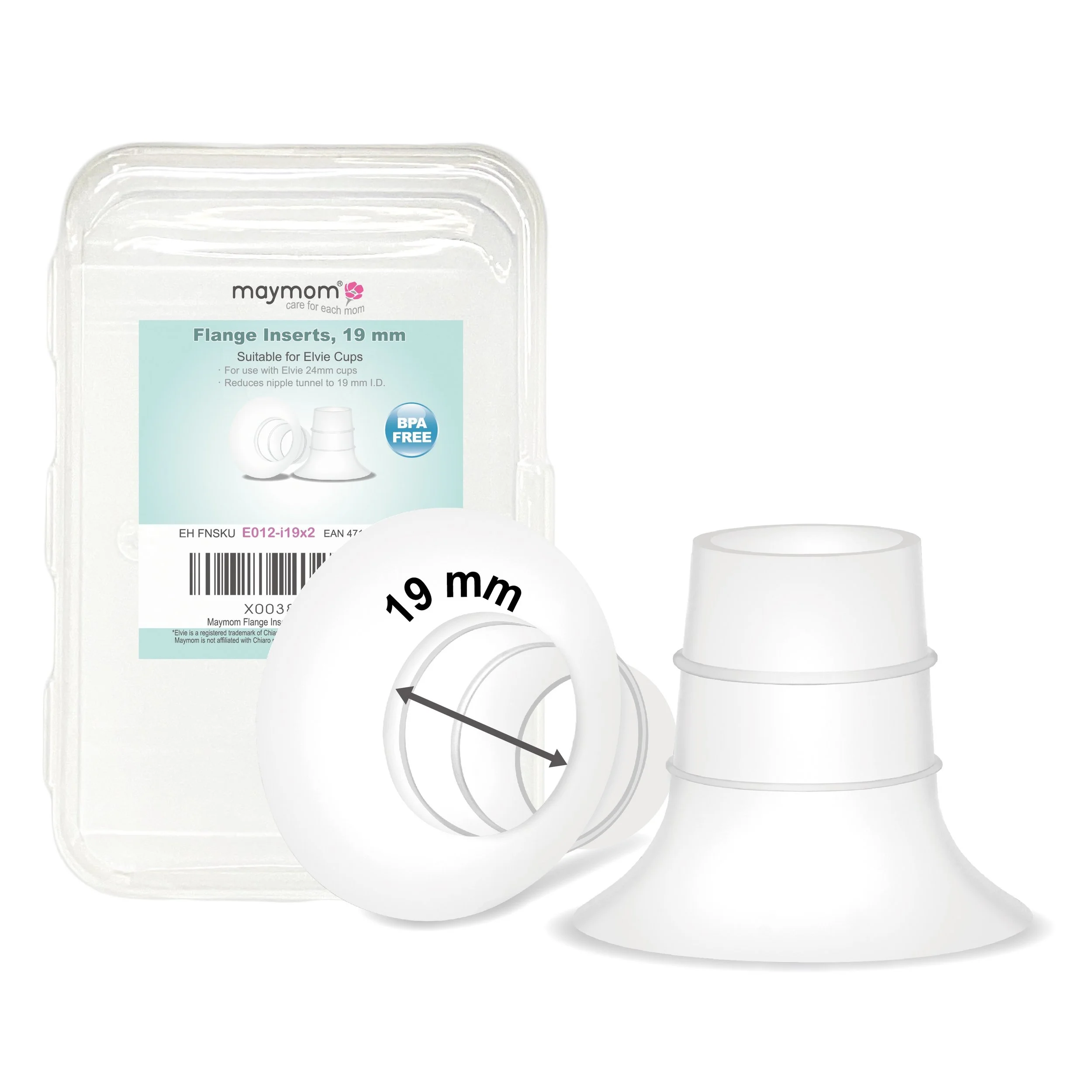How to Optimise Your Breast Pump to Get More Milk
Pumping doesn’t have to feel like hard work..
If you’re pumping to boost your milk supply, store milk for returning to work, or supplement a sleepy newborn, you’re not alone. Many mums find themselves wondering why they’re not getting as much milk from the pump as they expected.
The good news? Small tweaks in how you pump can make a big difference. From flange sizing to warmth, let-down stimulation, and relaxation techniques, optimising your setup helps your pump work with your body, not against it.
As a midwife and IBCLC, I see parents every week who are putting in the time and effort but not seeing the results they deserve. Let’s change that.
1. Make sure your flange size fits you
An ill-fitting flange is one of the most common reasons for lower milk output. The flange (or shield) should feel comfortable, with your nipple moving freely in the tunnel and milk flowing without pain or friction.
A poor fit can compress milk ducts and reduce flow, even with a hospital-grade pump.
Signs your flange may be the wrong size:
Nipple rubbing, pinching, or blanching (turning white)
Pain during or after pumping
Minimal milk after a full session
Nipple swelling, discolouration, or a “stuck” feeling
Flange fit is about more than just measurements — the right size depends on how your tissue moves, feels, and responds during pumping. Many parents find they need smaller sizes than expected.
Getting the right fit can instantly improve comfort and yield. You can book a free flange fitting when you purchase your Spectra breast pump through The Breast Help, or browse our flange insert collection online to find your best fit using evidence-based methods recommended by IBCLCs.
2. Check your suction and cycle settings
More suction doesn’t mean more milk. In fact, too much vacuum pressure can compress delicate breast tissue, leading to inflammation or reduced flow.
Most electric pumps like the Spectra S1 or S2 offer two modes:
Let-down mode: short, quick cycles that mimic a baby’s initial suckling to trigger milk ejection.
Expression mode: slower, deeper suction once your milk is flowing.
Start with the let-down mode until you see milk spraying or dripping, then switch to expression mode. Adjust the suction only as high as is comfortable - you should never feel pain.
If you’re not sure your pump is set correctly, try experimenting with different cycle lengths and suction strengths for each breast. Every woman’s milk ejection reflex responds a little differently.
3. Warmth really helps
Applying gentle warmth to your breasts before and during pumping can help improve circulation and milk flow. Studies show that warm compresses can increase expressed milk volume by promoting oxytocin release and softening fatty milk.
The Mini + Me Boobie Packs (use my affiliate code THEBREASTHELP for a discount) are designed to warm around your pump flanges, making it easy to keep the milk ducts relaxed and responsive while expressing. You can also use a warm towel or heat pack for a few minutes before you start.
If your breasts feel full or firm, massage gently from the outer breast toward the nipple before pumping to help stimulate flow.
4. Create the right environment
Milk flow is strongly influenced by oxytocin - - - your body’s “let-down” hormone. Stress, rushing, or cold environments can inhibit it.
Try to:
Sit comfortably and take a few deep breaths before you begin
Look at photos or videos of your baby
Massage your breasts BEFORE + during pumping
Use gentle warmth to relax the tissue
Play soft music or practice relaxation breathing
Even short relaxation routines can make pumping faster and more effective.
5. Pump frequently and consistently
Milk production works on supply and demand. The more often milk is removed, the more your body is signalled to make.
If you’re trying to increase supply, aim for 8 or more milk removals in 24 hours, including breastfeeding and pumping combined.
Power pumping (a structured session that mimics cluster feeding) can also help boost supply over several days. You can read more about how to do it safely and effectively in our article Power Pumping: How to Boost Your Milk Supply Naturally.
6. Avoid these common pumping myths
Myth 1: More suction equals more milk.
Not true. High suction can damage tissue and reduce milk ejection. Comfort always comes first.
Myth 2: You need to empty your breasts completely.
Breasts are never truly empty. The goal is regular, effective milk removal, not perfection.
Myth 3: Pumping for longer always helps.
Most parents reach peak milk flow within 15–20 minutes. Longer sessions can cause irritation and fatigue.
Myth 4: You have to pump at the same time every day.
Consistency matters more than strict timing. Fit sessions around your daily rhythm — the key is frequent removal.
7. Check your equipment
Over time, pump parts wear out and lose suction. Regularly inspect and replace:
Valves and membranes (every 1–3 months, or sooner if damaged)
Tubing (if you see condensation or residue)
Flanges (if cracked or warped)
Using genuine Spectra replacement parts ensures your pump maintains full vacuum and hygiene.
8. Try gentle hands-on pumping
Combining massage with pumping can help drain more milk and prevent blocked ducts. Use gentle circular motions over firm areas and compress the breast during expression.
A 2012 study found that mothers who used hands-on techniques produced significantly more milk compared to those using the pump alone. It’s simple, free, and effective.
9. Review your overall hydration and nutrition
Milk is mostly water, so staying hydrated matters. Choose drinks that replace fluids and electrolytes without added sugar. Hydramama is a great option, designed with pregnancy- and breastfeeding-safe electrolytes and nutrients to support hydration without artificial additives (I have an affiliate code THEBREASTHELP for a discount here!).
You don’t need to eat specific “milk foods,” but aim for balanced, regular meals with enough calories to match your energy output. There are natural and pharmaceutical galactogogues (milk boosting foods) that you can choose to add into your diet but the foundations fo effective milk removal need to be there before thinking of these things!
10. Get professional support
If you’ve tried all the above and your output still feels low, there may be underlying factors like latch issues, hormonal influences, or retained milk from previous sessions. A consultation with an IBCLC can help identify and address these issues with a tailored plan.
At The Breast Help, you can book a virtual or in-person lactation consult and receive a personalised pumping plan, flange fitting, and support to make your sessions more efficient and comfortable.
At the end of the day…
Optimising your pump isn’t about pumping harder or longer. It’s about understanding how your body responds, setting yourself up for comfort, and supporting milk flow with warmth, the right fit, and a calm environment.
Even small adjustments can make your sessions easier and your milk output stronger.
References
Wambach K., Spencer B. (2023). Breastfeeding and Human Lactation, 7th ed. Jones & Bartlett Learning.
O’Dell L., Prime D.K. (2022). Clinical approaches to improving milk expression efficiency. Breastfeeding Medicine, 17(10), 793–800.
Kent J.C., et al. (2021). Characteristics of breast pumping patterns and their impact on milk production. Journal of Human Lactation, 37(2), 235–244.
Prime D.K., et al. (2020). Evidence-based guidance for optimal milk expression. International Breastfeeding Journal, 15(1), 85.


